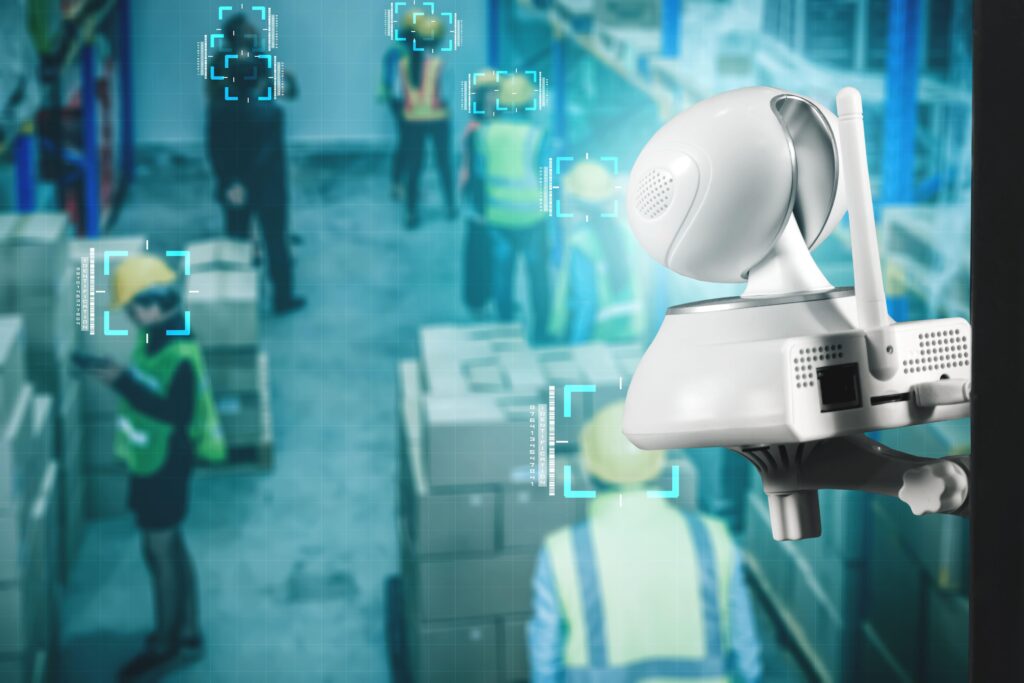
The movie Minority Report, starring Steven Spielberg and Tom Cruise, has created a variety of issues not only in terms of art but also in society. Tom Cruise’s main character, John Anderton, is installed throughout the city and undergoes eye transplants to hide from the identification iris recognition system.Unlike the movie, eye transplant surgery still has a long way to go in reality. However, the concept of ‘pervasive individual identification systems’ is almost becoming a reality. Among them, today we’re going to talk about facial recognition technology!
Most facial recognition systems are built on the concept of a ‘cooperative system’. A method of contrasting an image taken while looking directly at the camera at a predetermined distance with appropriate lighting against a validated image stored in the database. This type of system is widely used in border control and physical security systems.
A more interesting concept is the “non-cooperative systems” that recognize specific faces in the crowd. I have to recognize people who are wearing glasses, scarves, hats, or even moving when both the lighting and the angle of the face are my own! An Australian company called Imagus Technology has developed a crowd facial recognition system that does this. However, the Korean company “GB Soft” has also developed Citnem with mobile phones and cameras, and has been applied to the construction industry and driving drivers to show their performance.
The facial recognition system constructs statistical models of faces with low-frequency textures such as skeletons. There are systems that take advantage of very high frequency features such as spots on the skin, eyelashes, wrinkles around the eyes, but they require very high quality images. Low-frequency information is much more appropriate because the movement is blurry and the camera angle changes in the reality that people pass by!Biometrics is also rapidly being introduced to facilitate payment systems and prevent fraud. The most popular biomarkers are fingerprints and facial recognition. It is typically built as part of a dual-factor authentication system. In 2016, MasterCard launched the Selfie Pay app for faster and safer online purchases. If you send a selfie when paying online, you can immediately authenticate it.Fingerprint recognizers are not installed on all mobile phones, but cameras are on almost all mobile phones. In the future, when biometric with proper security features is introduced as part of a multi-factor authentication process, it is expected that numerous apps and websites will not have to write passwords one by one.Facial recognition systems are used not only for identification but also for various marketing and demographics. Perhaps this is why many companies advocated interest and application when introducing “GB SOFT”.For example, you can count the number of people who see ads or displays in a store, differentiate gender and age groups, and generate a variety of data, such as when you saw ads. This data can be used effectively for target marketing and advertising!

In fact, the digital outdoor advertising device ‘DOOH (Digital Out-of-Home)’ is already in use in Australia. This device minimizes the waste of advertising costs by determining the optimal advertising time for a specific person. For example, it’s a way to expose family pie ads only when the mother approaches.What if you could analyze people’s emotions beyond demographic perception? The development of artificial intelligence (AI) is realizing the concept that would appear in science fiction movies. Humanoid robots such as “Pepper” are equipped with special emotion recognition software that responds to human emotions. This could also be an important advertising and marketing asset.New technology is always a double-edged sword. Biometrics and advanced emotion detection technologies are no exception. People use biometric systems to benefit from faster and safer e-commerce and faster airport security checks. But the confidence that businesses manage biometric data securely and use it for stated purposes only must be supported!Another problem is the difficulty of controlling emotion recognition technology. It’s not long before we can record and analyze people’s emotions in real time with advanced augmented reality glasses or lenses during business negotiations. What about having a sincere conversation with your family or friends? Emotional information can’t always be beneficial, right?
Facial recognition technology has already entered the stage of proliferation. For example, a ubiquitous security camera is connected to a vast array of cloud computing resources over a broadband network. The only thing that’s missing is software. If reliable software is developed, face recognition in crowds will be a matter of time.

▲ GB Soft Co., Ltd.
▲ CEO : Ki-bum Park ▲ http://gb-soft.co.kr
▲ gbsoft@gb-soft.co.kr
▲ +82-53-716-4884
EJ SONG
ASIA JOURNAL

